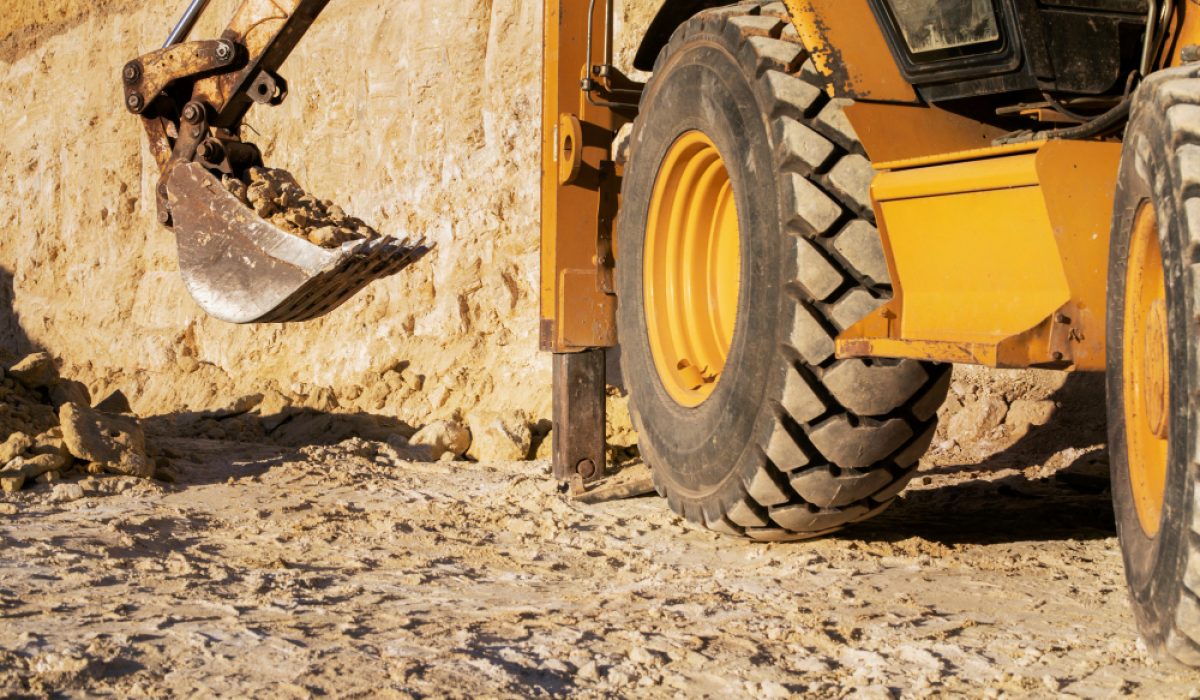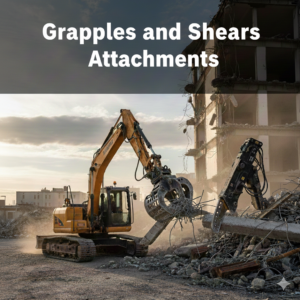In the world of heavy machinery, finding the right excavator is only half the battle. The true effectiveness of your project hinges on how to choose the right excavator bucket for your project. With a myriad of options available, each designed for specific tasks, navigating this terrain can be challenging. This comprehensive guide will delve into the intricate details of each excavator bucket, unraveling their unique characteristics and answering common questions about these indispensable attachments.
Understanding Excavator Buckets: An Overview
Before we delve into the specifics of each excavator bucket type, let’s understand the three broad categories: finishing, digging, and trenching buckets. These categories encapsulate the primary functions of excavator buckets and set the stage for a more detailed exploration.
1. Finishing Buckets
Designed for the final touches, finishing buckets excel in creating smooth surfaces and leveling terrain. These buckets are short, shallow, and wide, ideal for distributing fine aggregates to achieve a polished finish at the end of a project.
2. Digging Buckets
As the name suggests, digging buckets are the workhorses for excavation projects. Equipped with teeth at the end, they effortlessly break through and dig up hard surfaces, making them a staple in general construction and landscaping.
3. Trenching Buckets
Specifically tailored for trenching tasks, these buckets are characterized by their ability to create narrow, deep trenches. Trenching buckets come in various designs, each catering to different trenching needs, such as micro trenching for cables or pipelines.
The 11 Types of Excavator Buckets
1. Digging Bucket
The epitome of a traditional excavator bucket, the digging bucket is designed for various uses, with its primary function being, unsurprisingly, digging. Equipped with teeth, it excels in breaking through and excavating hard surfaces.
Best for: Digging up hard surfaces and moving material in general construction and landscaping projects.
2. Rock Bucket
Ideal for compact and hard surfaces that demand extra strength, the rock bucket is reinforced to withstand substantial pressure. Its sharp teeth make it adept at penetrating and breaking up stubborn surfaces like asphalt and large sheets of rock.
Best for: Penetrating and breaking up solid surfaces.
3. Utility Bucket
Utility buckets prove invaluable when excavating near pipes and cables. Designed to prevent cable strikes, these buckets feature a rounded edge with double reinforcement, minimizing the risk of catching loose cables and wires.
Best for: Digging near utility lines and pipes without risking damage to cables.
4. Grading Bucket
Commonly known as finishing or trench cleaning buckets, grading buckets are employed for smoothing and leveling surfaces. Their short, shallow, and wide design aids in creating a flat profile at the end of a project.
Best for: Leveling and profiling the ground to leave a smooth finish, especially with softer materials like fine dirt and sand.
5. Tilt Ditch Cleaning Bucket
A versatile bucket that can tilt 45 degrees left or right, the tilt ditch cleaning bucket is perfect for more complex projects set on slopes or uneven surfaces. Similar to a grading bucket, it uses a flat and wide edge to distribute and smooth out soil, sand, or fine dirt.
Best for: Smoothing, cleaning, and finishing complex projects on slopes or uneven surfaces.
6. V Bucket
The V bucket stands out with its unique shape, creating clean v-shaped trenches with a single sweep of the excavator’s arm. Depending on the material being trenched, it may come with or without teeth, and it is particularly useful for laying cables and pipes.
Best for: Digging and cleaning v-shaped trenches suitable for laying pipes and cable.
7. Frost Bucket
Considered the rock bucket’s more advanced sibling, the frost bucket is equipped with additional teeth on the backside. It excels in breaking up extremely compact and hard surfaces, especially in environments where the ground freezes during winter.
Best for: Breaking up extremely compact and hard surfaces, particularly in cold environments.
8. Micro Trenching Bucket
The micro trenching bucket makes trenches that are only a few inches wide but significantly deep thanks to its narrow, claw-like design. Originally intended for fiber-optic cables, it is now useful for laying pipes and irrigation systems.
Best for: Digging narrow trenches suitable for cables, pipes, and irrigation systems.
9. Skeleton Bucket
While resembling a digging bucket at first glance, the skeleton bucket sets itself apart with large slots or a grid at the back. This design allows fine materials to pass through, effectively separating larger pieces of stone, trash, and concrete.
Best for: Separating aggregates like large rocks or other materials from dirt, ideal for recycling or backfilling trenches and ditches.
10. Rake Riddle Bucket
Similar to a skeleton bucket with slats for debris to fall through, the rake riddle bucket focuses on effective raking through dirt and soil with its long teeth. It is particularly useful for digging out tree roots and shrubbery while saving the soil for later use.
Best for: Digging out tree roots and shrubbery, allowing soil and fine aggregates to pass through.
11. Clean-up Bucket
Equipped with a straight edge and a larger carrying capacity than other finishing buckets, the clean-up bucket is perfect for cleaning job sites, shoveling loose materials, and grading surfaces.
Best for: Cleaning up a job site, shoveling loose materials, and grading and smoothing materials for a finished appearance.
Excavator Bucket FAQ
Common Excavator Bucket Sizes
Excavator bucket sizes are crucial considerations when selecting the right attachment. These sizes fluctuate depending on the make, model, and size of the excavator.
Mini excavator bucket sizes: Typically range from six inches for specialty buckets to 30 inches for grading buckets.
Larger excavator bucket sizes: Can handle up to an 84-inch grading bucket.
Refer to the provided chart for a helpful reference on matching excavator sizes to bucket sizes.
Are Excavator Buckets Universal?
Unfortunately, excavator bucket sizes are not universal. It is imperative to consider the make, model, and size of your machine before purchasing or renting an excavator bucket. While some buckets may fit a range of machines, it is not standard to use a bucket that is not specifically designed for your excavator.
Key takeaway: Always account for the make, model, and size of your machine before purchasing or renting an excavator bucket.
Different Types of Excavator Buckets
Excavator buckets come in different shapes and sizes, each with unique functions. To assist in decision-making, here are the 11 types of excavator buckets and their best uses:
- Digging bucket: Common bucket type for digging and moving material in general construction and landscaping projects.
- Rock bucket: Specialty bucket with additional durable teeth for breaking up hard, compact surfaces.
- Utility bucket: Specialty bucket designed to avoid utility piping and cables while digging.
- Grading bucket: Designed for smoothing and finishing softer materials to create a level surface.
- Tilt ditch cleaning bucket: A smoothing and finishing bucket that can be angled for use on a slope.
- V bucket: Creates v-shaped trenches suitable for laying piping and utility cables.
- Frost bucket: Advanced version of a rock bucket for breaking up extremely compact surfaces.
- Micro trenching bucket: Narrow, claw-like tool for digging small trenches suitable for cables, pipes, and irrigation.
- Skeleton bucket: Separates larger materials from fine materials, useful for recycling or backfilling.
- Rake riddle bucket: Focuses on effectively raking through dirt and soil, useful for digging out tree roots.
- Clean-up bucket: Finishing bucket with a larger carrying capacity for cleaning up job sites, shoveling loose materials, and grading surfaces.
How to Choose the Right Excavator Bucket
Choosing the right excavator bucket requires a thoughtful evaluation of various factors. From worksite conditions to potential hazards, consider the following before deciding on the perfect excavator bucket for your project:
- Worksite conditions: Determine the size of your workspace. Are you in a wide, open area where a large excavator with a bigger bucket is suitable, or is your workspace more compact, requiring a mini-excavator with a smaller bucket?
- Climate: Understand the impact of climate on your work site. In cold and dry climates, you may need the extra force of a rock or frost bucket if the ground is frozen. In humid climates, where the soil is softer, you might not require as much digging power.
- Ground conditions: Assess the compactness of the ground. If you’re dealing with extremely compact surfaces, a rock or frost bucket may be necessary to break up the material effectively.
- Surrounding hazards: Identify potential hazards. Are you digging near utility cables or irrigation systems? If so, a utility bucket may be the safest choice to avoid damaging cables.
- Job description: Define the purpose of your project. Are you trenching, digging, breaking up material, or finishing the site? Do you need to sift through any aggregate? Consider the specific requirements of your project when shopping for the right excavator bucket.
Conclusion
Choosing the right excavator bucket is a critical decision that significantly impacts the efficiency and success of your project. By comprehensively understanding the characteristics and applications of each type, you can make an informed choice aligned with your specific project requirements. Whether you’re digging trenches, breaking up hard surfaces, or finishing a job site, the right excavator bucket is the key to achieving optimal results.
In conclusion, this guide serves as your comprehensive resource for excavator buckets, offering detailed insights into their types, applications, and considerations. Armed with this knowledge, you are well-equipped to make informed decisions and propel your projects to new heights of efficiency and success.





